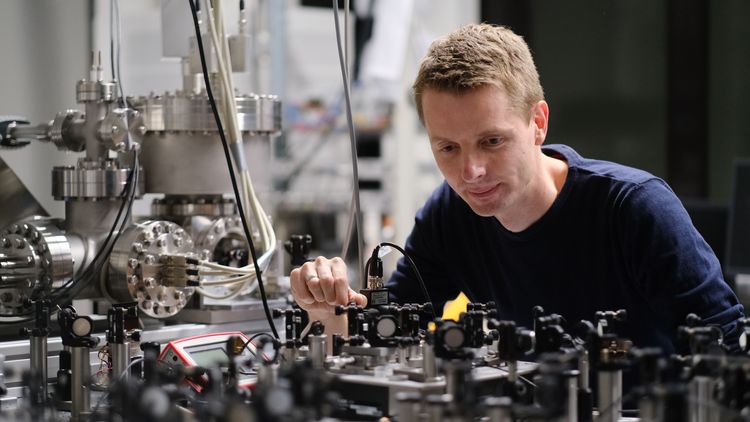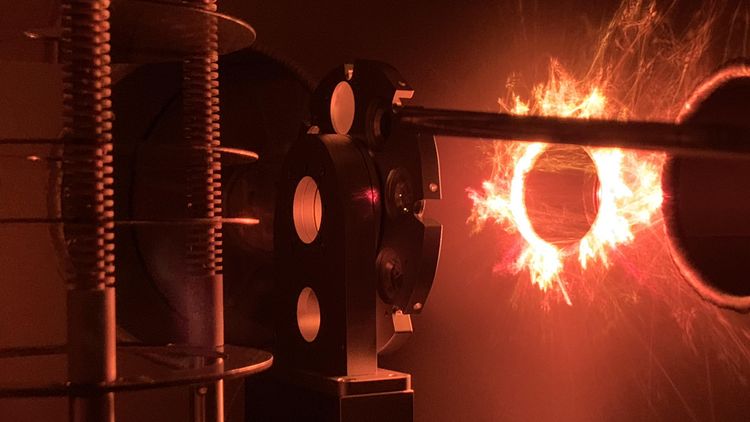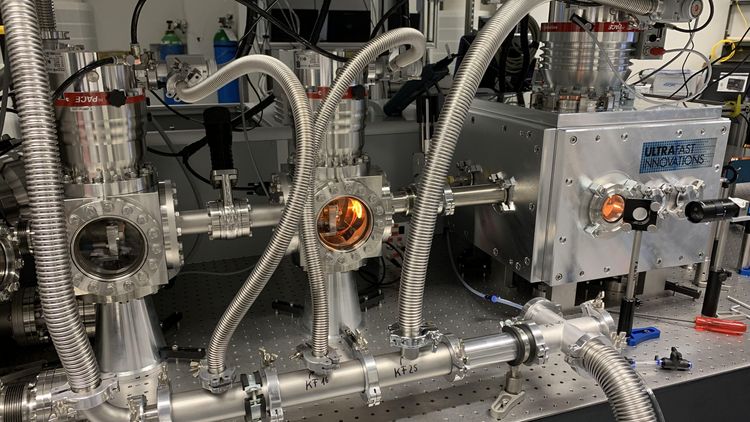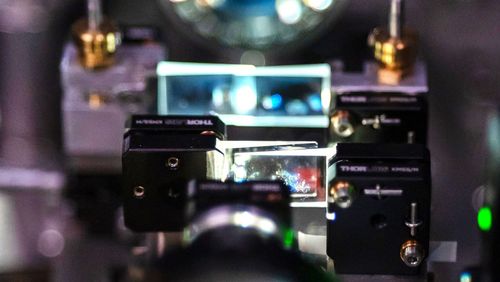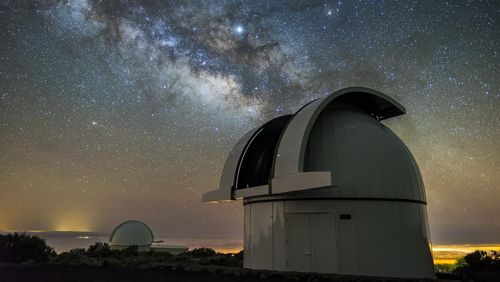This year's Nobel Prize in Physics was awarded for breakthroughs in the field of attosecond physics. The new methods are also being used in Oldenburg – thanks, not least, to a direct connection to Nobel Prize laureate Anne L'Huillier.
Mr Vogelsang, you were a postdoctoral researcher in Professor Anne L’Huillier’s research group at Lund University in Sweden for three years, from 2017 to 2020. What did you learn from her?
She is a role model for me in many ways. I can learn a lot from her both in terms of her approach to science and the way she motivates others. She’s very good at inspiring enthusiasm for her research. She is highly respected in her field because of her work, but she has remained very down-to-earth and modest. The team is always her main focus, and teaching is also very important to her – training her PhD students and postdoctoral researchers, for example. I find it typical of her dedication that having just learned that she had won the Nobel Prize, she continued with the lecture she was giving and finished it. I’m delighted for her that she has received this award. Her way of doing research has inspired me, and of course I’ve also learnt a lot from her about physics – in particular about how to generate extremely short laser pulses.
And that’s what the work of this year's Nobel Prize winners in physics is about. Anne L'Huillier, Pierre Agostini and Ferenc Krausz all work with “attosecond physics”. What is meant by that?
Attosecond physics is the study of physical processes that take place on a time scale of a few attoseconds. An attosecond is an incredibly short unit of time – a billionth of a billionth of a second. For comparison, there are about as many attoseconds in one second as the total number of seconds that have passed since the birth of the universe.
What processes happen so quickly?
Mainly processes such as the movement of electrons or, more generally, charged particles in molecules or solids. For instance, when light falls on a semiconductor material and releases electrons, this event takes about one femtosecond, or a thousand attoseconds. To investigate this process, you need flashes of light that are even shorter than that. This enables you to “capture” the motion of the electrons.
Are there potential applications for this?
One example is energy generation in solar cells. Once the process through which free electrons are generated in a semiconductor has been better understood, it can be optimised. But we’re still doing the basic research, and the focus is not directly on applications. As Anne L'Huillier explained in an interview yesterday, the discovery she made in 1987 was very new and unexpected at the time, and it took quite a while to understand the fundamental processes at play. It was only many years later that it became possible to use her discovery to investigate new things and look for applications. And we’re still working on that. In 1987 I had only just been born, but my current research is still based on the discovery Anne made back then.
So how do you generate such short pulses of light?
You need laser light in different colours, which means with different wavelengths. This light has to be combined in such a way that all the wave peaks of the different colours add up at a certain point in time, but cancel each other out at all other times. This results in a short, very high-energy flash of light. The two other laureates, Pierre Agostini and Ferenc Krausz, demonstrated independently of each other in 2001 that it was possible to generate such attosecond laser pulses in this way.
And Anne L’Huillier?
She did the groundwork, so to speak. In the 1980s she was working with infrared lasers, which were getting better and more powerful. Then in 1987 she discovered that by pointing a sufficiently powerful laser beam at a cloud of the noble gas argon you could generate light with shorter wavelengths: the interaction of the light with the gas creates new light waves with shorter wavelengths. It’s like when you play a stringed instrument and create different tones, known as “overtones”, in addition to the fundamental tone. As Pierre Agostini and Ferenc Krausz demonstrated later on, these “overtones” also have the properties of laser light, and can therefore be used to generate extremely short pulses.
And what makes them so special?
The wavelength of the newly generated light is in the extreme ultraviolet to soft X-ray range, so much shorter than that of visible light, for example. It makes sense that a pulse that is the product of different light waves added together can’t be shorter than the longest of these waves. This means that with visible light you can only generate pulses that last one femtosecond; if you want to get down to the attosecond range, you need UV light.
There are still only a few research labs worldwide, including the one at the University of Oldenburg, where scientists can work with these attosecond pulses. What is being researched here?
It really has to be said: the attosecond research here is pretty special – it’s not something every university has. Christoph Lienau and Matthias Wollenhaupt set up an attosecond laboratory on the Wechloy campus in 2019. This lab is now being used by the Oldenburg physicists in the collaborative project “DyNano” (Dynamics on the Nanoscale) to investigate attosecond electron dynamics in nanostructures. Matthias Wollenhaupt and I work together as a team there, using precisely-controlled femtosecond laser pulses to generate tailor-made attosecond light pulses. These pulses interact with atoms, molecules and nanostructured solids and release electrons in the process. We can then observe these electrons and gain insights into ultrafast processes. There’s even a second lab of this type in Oldenburg now. As part of my research project, which is funded by the German Research Foundation’s Emmy Noether Programme, my team and I are currently setting up another experimental laboratory where we will also conduct research in attosecond physics.
What is the focus there?
In my laboratory – due to a different technical approach – everything is somewhat smaller. We generate far more attosecond pulses per second than the initially used sources. I learned about this special method in Lund, in Anne L'Huillier's group, which continues to play a pioneering role in the development of advanced attosecond light sources. These pulses have less energy, but in combination with an electron microscope the higher number of pulses allows me to observe certain processes in even greater detail. The additional statistics are a considerable bonus in such complex experiments. I’m particularly interested in the question of how the electric field of light can be used to control electrons at the nanoscale. For example, an interesting process takes place countless times per second in the photovoltaic systems mounted on the roofs of the university buildings – every time the incidence of light generates free charge carriers there. Yet we still don’t have a sufficient understanding of what happens at the nanoscale when a light particle from the sun is absorbed by a semiconductor. The processes that occur on the attosecond time scale can play a decisive role here. Therefore, we want to study these ultrafast dynamics in both high temporal and spatial resolution in order to better understand them. The knowledge thus gained could then be used to optimise charge transfer in nanostructures in a targeted way – in innovative solar cells, for instance.
Thank you very much!
Inteview: Ute Kehse

